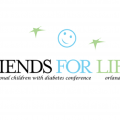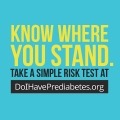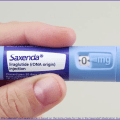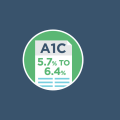Our top takeaways from the health and medicine edition of the world-famous TED conference.
Prevention
23 readers recommended
Seeking to reach over 31,000 older adults with prediabetes over the next two years.
41 readers recommended
Leading ophthalmologist Dr. Ivan Suñer on what diabetic retinopathy is, how to prevent it, and what future treatments hold.
22 readers recommended
Praluent now approved for two specific patient populations. How this drug has the future potential to make a big impact on people with diabetes.
23 readers recommended
What does this controversial data mean for the type 2 diabetes epidemic?
42 readers recommended
Our top actionable tips for parents: straight from Friends for Life!
44 readers recommended
ADA, CDC, AMA, and the Ad Council just launched the first-ever national PSA campaign targeting prediabetes awareness and prevention - plus, three short video ads!
24 readers recommended
Diagnoses stabilizing, though 83% of 65+ year olds have diabetes or prediabetes.
29 readers recommended
Tax revenue will be invested in primary school sports in England.
44 readers recommended
Plus, a partnership with UCSF to drive better research.
31 readers recommended
“Monumental news for the 51% of American seniors living with prediabetes.”
27 readers recommended
A standing ovation for Dr. Margaret Powers at ADA last month r Dr. Margaret Powers at ADA last month.
53 readers recommended
Advice for increasing daily activity, the new Fit2Me mobile app, and enthusiasm for the National Diabetes Prevention Program
34 readers recommended
The bold new recommendation for children and their parents
34 readers recommended
Type 1 diabetes has been prevented and cured in more than 500 ways in mice, but never in humans. nPOD researchers are trying to change that, one donated organ at a time.
47 readers recommended
Why a good night of sleep transforms Adam Brown's diabetes the next day
48 readers recommended
The latest evidence on Saxenda shows that three years of treatment with the drug lowers risk for type 2 diabetes by an impressive 79%
51 readers recommended
Participating in a lifestyle change program could help lower the risk of developing type 2 diabetes
35 readers recommended
Why is the BMI cutoff lower for diabetes screening in people of Asian descent? How a new policy could ensure more people with diabetes and prediabetes are diagnosed.
83 readers recommended
Learn what heart failure is, what it has to do with diabetes, and how to identify and talk about this complication that’s often less discussed.



















